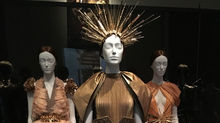Stan Lee's Saints and Superheroes
I reflect on Stan Lee's life and legacy at First Things:
"It was impossible not to look up to Stan Lee if you were a nerdy kid (like me) interested in creating fantastical universes (like me). Books like How to Draw Comics the Marvel Way interspersed comics-drawing tutorials with color commentary from Stan Lee. I got one of those books in a Christmas stocking when I was maybe ten and traced the figures in it to generate my very first superheroes. His personality was so strong that I thought of basically every Marvel hero, or story, or image as his creation. Only later did I come to understand that Lee was a writer, not an artist. In the visual medium of comics, he had to have collaborators. More on them in a moment.
With multiple Marvel blockbusters a year (none complete without a cameo from Smilin’ Stan), it can sometimes feel like we’re living in the universe Stan dreamed up—he is notable in comics not simply as the creator of a superhero universe, but of the concept of superhero universes. Whereas the older publisher, DC Comics, kept its heroes siloed in different cities (Superman in Metropolis, Batman in Gotham, and so on), Lee spearheaded the creation of Marvel Comics’ extra-crowded New York City, home to Spider-Man, Daredevil, the Fantastic Four, and many more. The riotous fecundity of the mainstream superhero genre, with its splash pages stuffed with a panoply of costumed crimefighters, owes much to Lee’s embrace of the shared superhero universe. In the face of Marvel’s success, DC Comics followed suit.
That’s not the only Marvel innovation that redefined the genre. Stan Lee’s superhero creations are notable for their combination of spectacular escapades and down-to-earth issues. Spider-Man starts out as a teenager entering the world of adult responsibilities and often falling short, torn between crime-fighting and his obligations to his work, school, and family. Lee liked to heap further burdens on Spider-Man (This week, Spider-Man’s worried about impressing a girl! This week, he’s got the flu!) to get readers rooting for this star-crossed everyman hero. The Fantastic Four, meanwhile, are superhero celebrities but also a family dealing with their own tensions and squabbles. They love each other, craggy orange exteriors and all, but that doesn’t mean they always get along. The classic DC superheroes—most prominently, Superman—had a sense of iconic untouchability. By contrast, Marvel took superheroes in a naturalistic direction. The comics sold like gangbusters, and soon DC emulated the rival company’s approach (to such an extent that, I’d argue, DC has gone overboard in some recent cinematic offerings and given us unlikeable and unheroic versions of Batman and Superman).
It’s this aspect of Lee’s work, the humanized superhero, that is most of interest to religious believers."
Read the whole piece at First Things






















